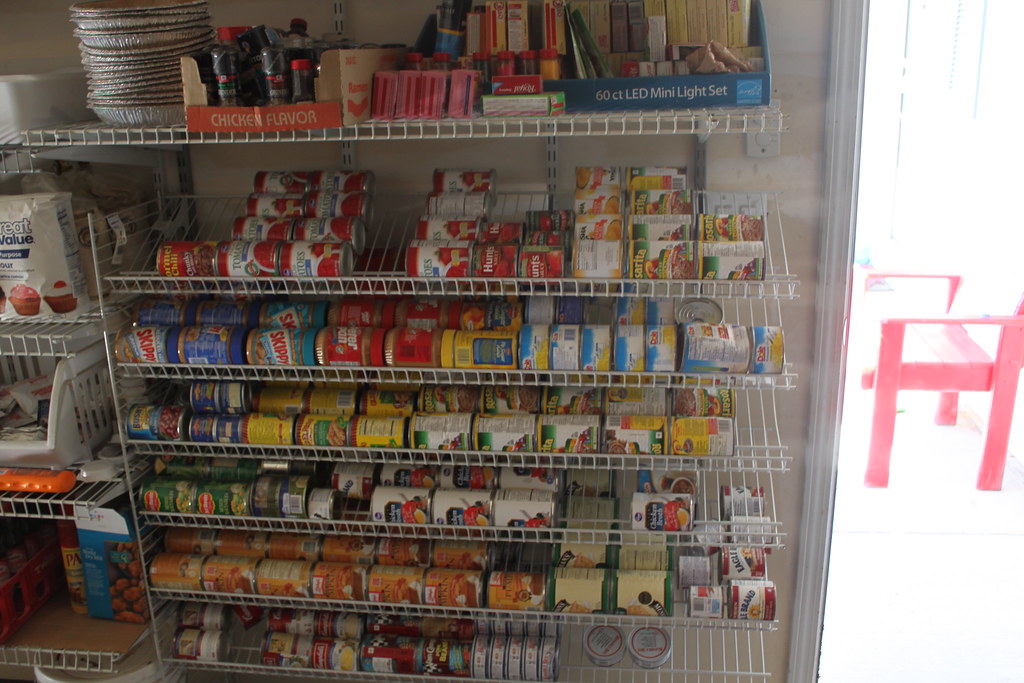We may earn money or products from the companies mentioned in this post.
Are you concerned about the possibility of a disaster or emergency? Whether it’s a natural disaster or a man-made crisis, being prepared is essential. One of the most important aspects of preparedness is having enough food to sustain yourself and your family. That’s where DIY survival food comes in.
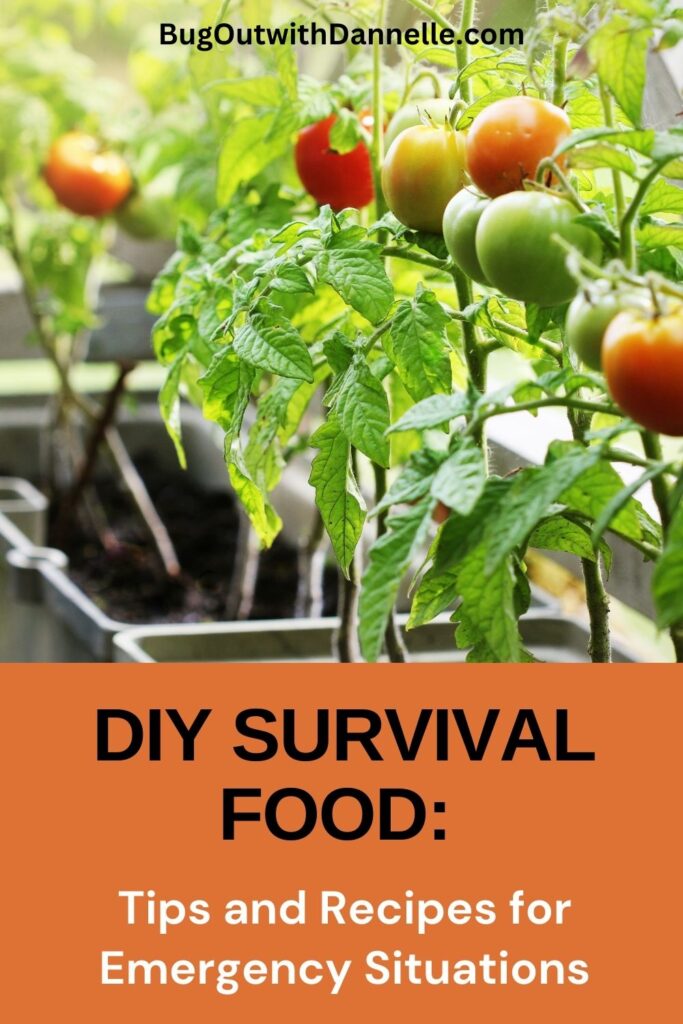
DIY survival food is exactly what it sounds like – food that you make yourself to have on hand in case of an emergency. It’s a way to ensure that you and your loved ones have access to nutritious food when you need it most. Not only is it a practical solution, but it can also be a fun and rewarding project.
With a little planning and preparation, you can create a stockpile of food that will last for months or even years. In this article, we’ll explore the basics of DIY survival food and give you tips on how to get started.
Essentials of DIY Survival Food
When it comes to DIY survival food, there are a few essentials that you need to keep in mind to ensure that you are well-prepared for any emergency. Here are some of the key things to consider.
Shelf Life
One of the most important things to consider when preparing DIY survival food is the shelf life of the ingredients you are using. You want to make sure that your food will last for a long time without spoiling or going bad. Some good options for long-lasting ingredients include canned goods, dried fruits and vegetables, and grains such as rice and quinoa.
Nutrition
Another important consideration is the nutritional value of your DIY survival food. You want to make sure that you are getting all of the nutrients you need to stay healthy and energized, even in a survival situation. Some good options for nutrient-dense ingredients include nuts and seeds, dried beans and legumes, and dehydrated meats.
Preparation
In addition to choosing the right ingredients, you also need to consider how you will prepare your DIY survival food. Ideally, you want to choose ingredients that are easy to prepare and don’t require a lot of special equipment or tools.
Some good options include instant oatmeal, canned soups and stews, and dehydrated meals that can be rehydrated with hot water.
Storage
Finally, consider how you will store your DIY survival food. You want to b e sure that your food is stored in a cool, dry place where it won’t be exposed to moisture or pests.
Some good options for storage containers include plastic bins with tight-fitting lids, mylar bags, and vacuum-sealed bags.
By keeping these essentials in mind, you can ensure you are well-prepared with a supply of DIY survival food that will keep you nourished and energized in any emergency.
Long-Term Food Storage Techniques
Canning and Preserving
Canning and preserving food is a great way to store food for the long term. With this technique, you can preserve fruits, vegetables, and even meats.
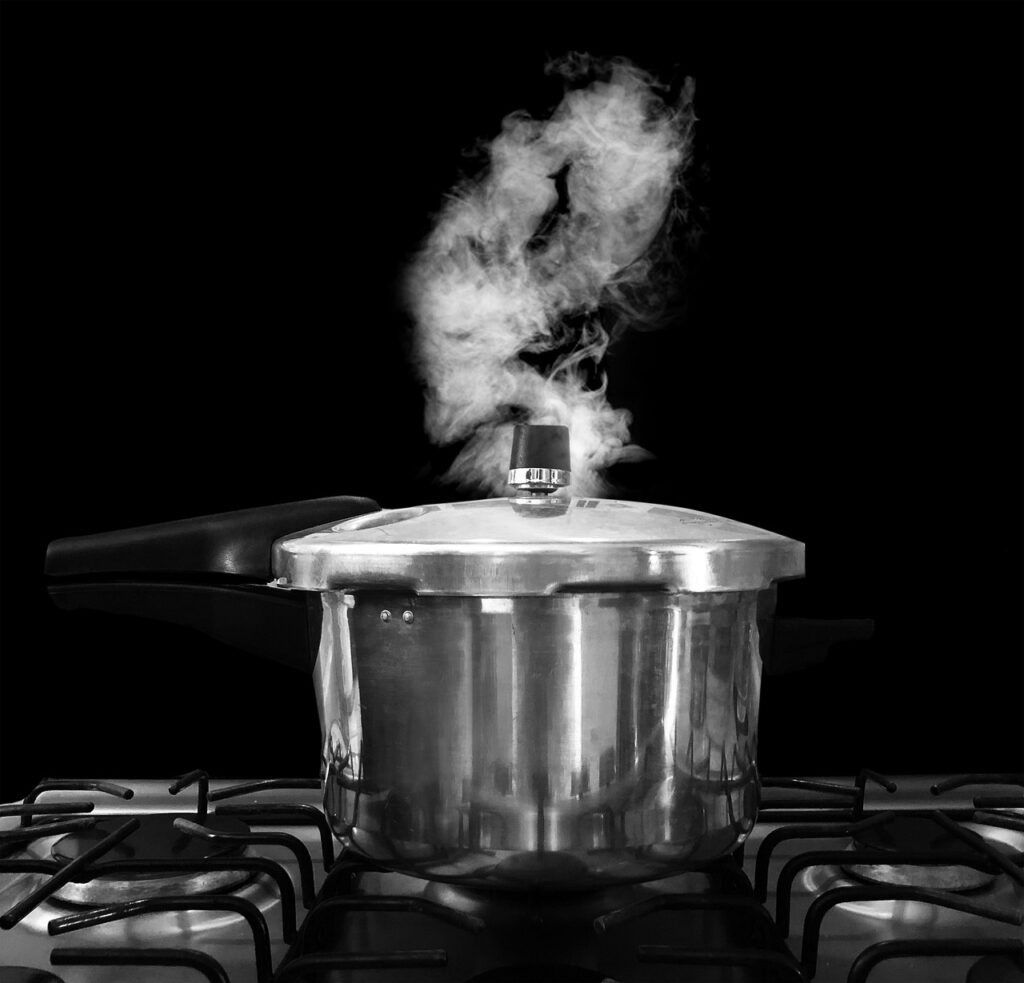
The process involves heating the food in a jar to kill off bacteria and sealing it to prevent air from entering. You can use a pressure canner or a water bath canner to preserve food.
Canning and preserving food is a great way to ensure that you have access to fresh, healthy food, even when fresh produce is out of season.
Dehydrating Foods
Dehydrating food is another great way to store food for the long term. When you dehydrate food, you remove the moisture, which helps to prevent bacteria growth. You can dehydrate fruits, vegetables, and even meats.
You can use a dehydrator or an oven to dehydrate food. Dehydrated food can last for months or even years, depending on how well it is stored.
Freeze-Drying
Freeze-drying is a process that involves freezing the food and then removing the moisture through a process called sublimation. This process helps preserve the nutritional value of the food while extending its shelf life.
Freeze-dried food can last for years and is a great option for long-term storage. You can purchase freeze-dried food or invest in a freeze-drying machine to do it yourself.
Vacuum Sealing
Vacuum sealing is a great way to store food for the long term. With this technique, you remove the air from the bag or container, which helps to prevent bacteria growth and keep the food fresh.
You can vacuum-seal fruits, vegetables, meats, and even cooked meals. Vacuum-sealed food can last for months or even years, depending on how well it is stored.
Root Cellaring
Root cellaring is an old-fashioned technique for storing food that is still effective today. With this technique, you store fruits and vegetables in a cool, dark place, such as a basement or cellar.
The cool temperature and lack of light help to slow down the ripening process and prevent spoilage. Root cellaring is a great option for storing root vegetables, such as potatoes, carrots, and onions, as well as apples and other fruits.
By using these long-term food storage techniques, you can ensure that you have access to fresh, healthy food, even when it is out of season or unavailable. Whether you choose to can, dehydrate, freeze-dry, vacuum seal, or root cellar your food, each technique has its benefits and can help you to build a well-stocked pantry for the long term.
Basic Survival Food Types
Grains and Legumes
When it comes to survival food, grains and legumes are a staple. They are easy to store and provide a good source of carbohydrates and protein. Some popular options include rice, quinoa, lentils, and beans.
To ensure that your grains and legumes last longer, store them in a cool, dry place. You can also consider vacuum sealing them or storing them in airtight containers.
Canned Goods
Canned goods are an excellent option for survival food. They have a long shelf life and can provide essential nutrients. Some popular options include canned fruits, vegetables, and meats.
When selecting canned goods, it is important to check the expiration date and inspect the can for any damage or dents. It is also important to store them in a cool, dry place.
Protein Sources
Protein is essential for survival, and there are several options available. Canned meats, such as tuna and chicken, are a good source of protein. You can also consider storing protein bars or powder.
Dried beans and nuts are also a great source of protein. They are easy to store and can be used in a variety of recipes.
Dried Fruits and Nuts
Dried fruits and nuts are a great source of nutrients and can provide a quick energy boost. Some popular options include raisins, apricots, almonds, and cashews.
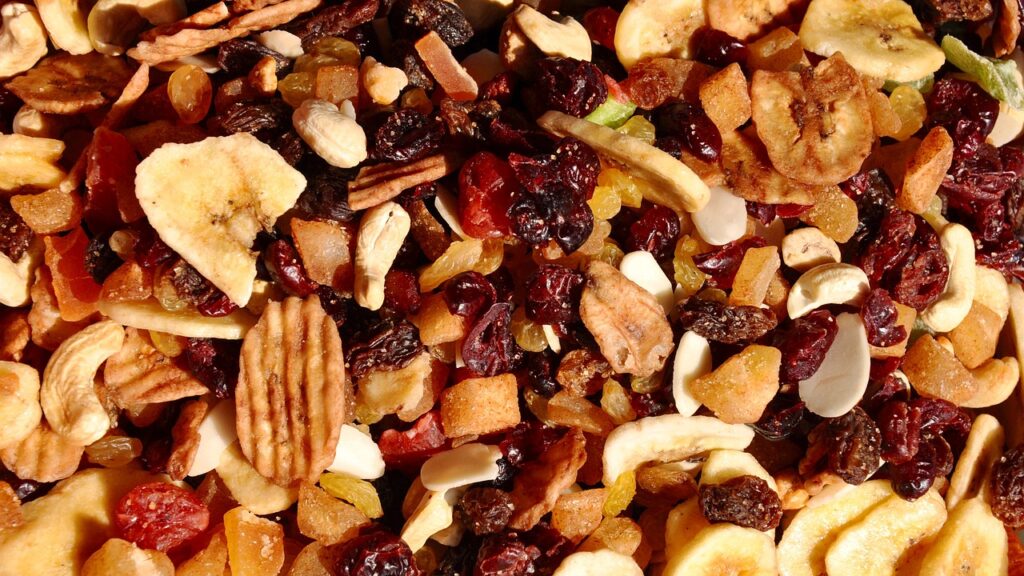
When storing dried fruits and nuts, it is important to keep them in a cool, dry place. You can also consider vacuum sealing them or storing them in airtight containers to ensure they last longer.
By stocking up on these basic survival food types, you can ensure that you have a variety of options to choose from in the event of an emergency. Remember to keep them stored properly and check expiration dates regularly to ensure they are still safe to consume.
Making Your Own Survival Meals
When it comes to survival food, making your meals is a great option. Not only does it allow you to customize your meals to your liking, but it can also save you money in the long run. Here are some ideas for making your survival meals.
Jerky Making
Jerky is a great source of protein and can be made from a variety of meats, including beef, venison, and turkey. To make jerky, you’ll need a dehydrator or an oven set to a low temperature. Slice your meat into thin strips, marinate them in your favorite seasoning, and dry them out until they’re crispy.
DIY MREs
MREs (Meals Ready to Eat) are a popular option for survival food, but they can be expensive. Making your own MREs is a great way to save money and customize your meals.
Start by choosing a protein source, such as canned tuna or chicken. Then, add some crackers, nuts, and dried fruit for carbs and healthy fats. Finally, add some seasoning packets and a spoon, and you’re ready to go.
Energy Bars and Snacks
Energy bars and snacks are a great way to keep your energy levels up during a survival situation. Making your own energy bars and snacks is easy and allows you to control the ingredients. Try making your own granola bars with oats, nuts, and dried fruit, or make some trail mix with your favorite nuts and seeds.
Foraging for Edibles
Foraging for edibles is a great way to supplement your survival food supply. Learn about the plants and berries that grow in your area, and you can identify them correctly before consuming them. Some common edible plants include dandelion, plantain, and wild berries.
Making survival meals is a great way to save money and customize your food supply. With a little creativity and know-how, you can create delicious and nutritious meals that will keep you going during a survival situation.
Water Purification and Storage
When it comes to survival situations, having access to clean drinking water is crucial. In this section, we’ll discuss some options for purifying and storing water.
Filtration Systems
One of the easiest ways to purify water is by using a filtration system. There are many different types of filtration systems available, ranging from simple straws to more complex pump systems.
Portable water filters: These are small, lightweight filters that are easy to carry with you on the go. They usually use a combination of activated carbon and ceramic filters to remove bacteria, protozoa, and other contaminants.
Gravity-fed filters: These filters use gravity to pull water through a series of filters, usually made of ceramic or carbon. They’re great for larger groups or for use at base camps.
Pump filters: These filters use a hand pump to force water through a filter. They’re a bit heavier and bulkier than other options, but they’re very effective at removing contaminants.
Chemical Purification
Another option for purifying water is by using chemicals. This method is often used in emergencies where no other options are available.
Chlorine tablets: These tablets are easy to use and can kill most bacteria and viruses in water. However, they don’t remove sediment or other contaminants.
Iodine tablets: Iodine tablets are similar to chlorine tablets, but they’re more effective against viruses. However, they can leave a strong taste and odor in the water.
Bleach: Regular household bleach can be used to purify water in an emergency. Use 8 drops of bleach per gallon of water, and let it sit for 30 minutes before drinking.
Water Storage Solutions
In addition to purifying water, it’s also important to have a way to store it. Here are some popular options for water storage:

Water bottles: These are a simple and easy way to carry water with you. Look for bottles made from durable materials, like stainless steel or BPA-free plastic.
Water bladders: Water bladders are flexible containers that can be filled with water and carried in a backpack. They’re great for longer trips where you need to carry a lot of water.
Water tanks: If you’re staying in one place for a while, a water tank can be a good option. Look for tanks made from food-grade plastic, and make sure to keep them clean and sanitized.
Gardening for Survival
Heirloom Seeds
When it comes to gardening for survival, choosing the right seeds is crucial. Heirloom seeds are a great option because they are open-pollinated and have been passed down for generations. This means seeds have adapted to their environment and are more resistant to pests and diseases.
Plus, you can save the seeds from your harvest and use them for next year’s crop. Some popular heirloom seeds include tomatoes, beans, and peppers.
Container Gardening
If you’re short on space, container gardening is a great option for growing your food. You can use pots, buckets, or old tires to grow vegetables and herbs. Make sure your containers have drainage holes and are filled with nutrient-rich soil.
Some great options for container gardening include lettuce, spinach, and herbs like basil and parsley.
Permaculture Basics
Permaculture is a design philosophy that focuses on creating sustainable ecosystems. When it comes to gardening, permaculture principles can help you create a garden that is self-sustaining and requires less maintenance.
Some permaculture basics include using companion planting to deter pests and attract beneficial insects, using natural fertilizers like compost and manure, and incorporating elements like rainwater harvesting and composting into your garden design.
By incorporating these gardening techniques into your survival plan, you can ensure that you have a steady supply of fresh, nutritious food.
Food Preservation Safety
Preserving food is an excellent way to ensure that you always have access to healthy, nutritious food, even in times of emergency. However, it’s essential to take the necessary precautions to ensure your food is safe. Here are some tips to help you preserve your food safely
Avoiding Contamination
When preserving food, it’s crucial to avoid contamination. This can be done by using clean equipment and surfaces, washing your hands thoroughly before handling food, and avoiding cross-contamination.
Cross-contamination occurs when bacteria from one food item is transferred to another. To avoid this, use separate cutting boards and utensils for meat, poultry, and fish, and always wash them thoroughly between uses.
Understanding Shelf Life
It’s essential to understand the shelf life of the foods you are preserving. Some foods, such as canned goods, can last for years, while others, such as fresh fruit and vegetables, have a much shorter shelf life.
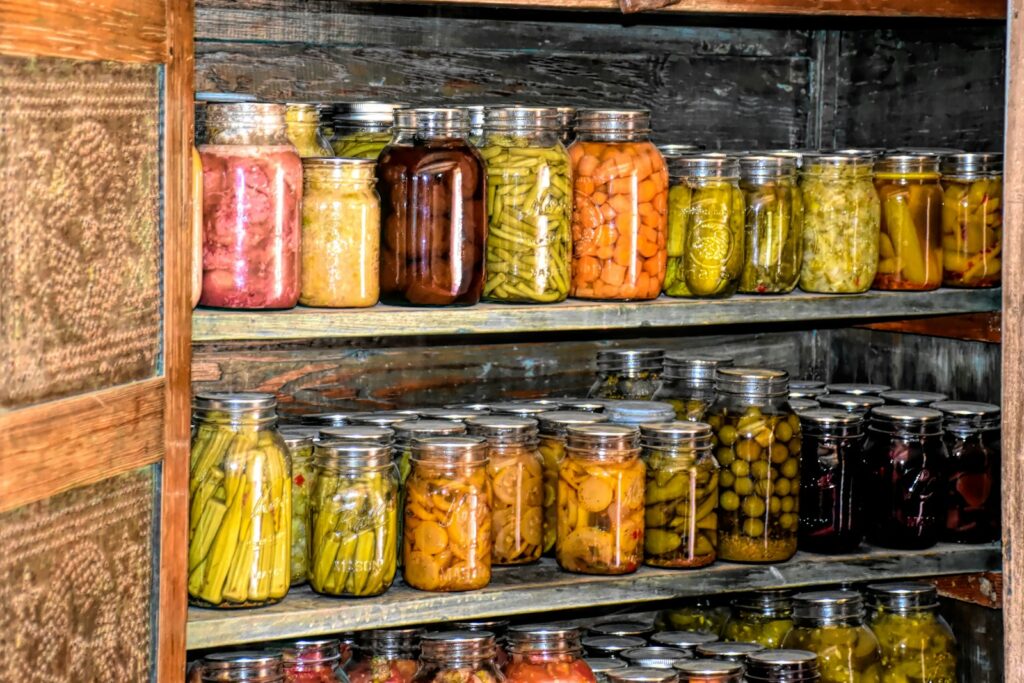
Knowing how long your preserved food will last will help you plan your meals and avoid eating spoiled food.
Labeling and Rotation
Labeling and rotation are essential when preserving food. Labeling your preserved food with the date it was preserved will help you keep track of its shelf life.
Additionally, rotating your food supply will ensure that you are always eating the oldest food first, reducing the risk of spoilage.
Preserving food is an excellent way to ensure that you always have access to healthy, nutritious food, even in times of emergency. With these simple tips, you can preserve your food safely and keep your family healthy and well-fed.
Survival Cooking Methods
Solar Cookers
When it comes to survival cooking, solar cookers are a great option. They are easy to use and require no fuel, making them ideal for long-term survival. All you need is sunshine!
Solar cookers work by trapping the sun’s rays and using them to heat your food. There are many types of solar cookers available, from simple box cookers to more advanced parabolic cookers.
Rocket Stoves
Rocket stoves are another great option for survival cooking. They are simple to make and use and can be fueled by a variety of materials, including wood, twigs, and even dried dung.
Rocket stoves work by creating a small, intense flame that burns hot and clean. This makes them ideal for cooking food quickly and efficiently, even in harsh outdoor conditions.
Open Fire Techniques
If you find yourself without any other cooking options, open-fire cooking techniques can be a lifesaver. While it may not be the most efficient method, cooking over an open flame can be a great way to prepare food in a survival situation.
To get started, you’ll need to gather some dry wood and kindling. Once you have a fire going, you can cook food directly on the flames or use a makeshift grill made from sticks and wire.
Remember, when it comes to survival cooking, it’s important to be prepared and have a variety of options available. Whether you’re using a solar cooker, rocket stove, or open-fire techniques, practice your skills before you find yourself in a survival situation.
Urban Survival Food Strategies
When it comes to urban survival, having a supply of food that can last you for several days is crucial. Here are some strategies to help you prepare.
Stock up on non-perishable items
Non-perishable items are key when it comes to survival food. These items can last for months or even years and can be eaten without refrigeration or cooking. Some examples of non-perishable items include canned goods, dried fruits, nuts, and granola bars.
Learn how to forage
Foraging is the practice of finding and gathering food from the wild. In an urban environment, this could mean finding edible plants in parks or along sidewalks. Make sure to do your research and only eat plants that are safe to consume.
Keep a small garden
If you have access to outdoor space, consider starting a small garden. This can be a great way to grow your produce and have fresh food available. Even if you don’t have much space, you can still grow herbs or small vegetables in containers.
Have a plan for water
In addition to food, having access to water is also crucial for survival. Make sure to have a plan in place for obtaining clean drinking water. This could mean storing water in advance or knowing where to find water sources.
Remember, being prepared is key when it comes to urban survival. By stocking up on non-perishable items, learning how to forage, keeping a small garden, and having a water plan, you can ensure that you have enough food to last you in an emergency.
Wilderness Food Procurement
When it comes to survival in the wilderness, knowing how to procure your food is essential. Here are a few methods to help you get started:
Hunting and Trapping
Hunting and trapping are effective ways to obtain meat in the wilderness. You can use a variety of methods, such as setting snares or traps, using a bow and arrow, or even using a rifle if you have one. It’s important to research and understand the laws and regulations in your area before attempting to hunt or trap any game.
Fishing

Fishing is another great way to obtain protein in the wilderness. You can use a fishing pole with bait or even try your hand at spearfishing. It’s important to know how to properly clean and prepare fish before consuming them.
Wild Plant Identification
In addition to hunting and fishing, it’s also important to know how to identify edible plants in the wilderness. Some common edible plants include berries, nuts, and certain types of mushrooms. However, it’s important to be cautious and properly identify plants before consuming them, as some can be poisonous.
Remember, procuring your food in the wilderness can be challenging and requires knowledge and skill. Always prioritize safety and follow proper techniques to ensure your survival.
Nutrition and Health Maintenance
Balancing Your Diet
When it comes to survival scenarios, it’s important to maintain a balanced diet to ensure that you’re getting all the nutrients your body needs. This means incorporating a variety of foods into your diet, including protein, carbohydrates, and healthy fats. It’s also important to pay attention to portion sizes to avoid overeating or undernourishment.
Vitamins and Supplements
In addition to a balanced diet, you may also want to consider taking vitamins and supplements to ensure that your body is getting all the nutrients it needs.
However, it’s important to be cautious and do your research before taking any supplements, as some can be harmful in high doses or interact with medications.
Staying Healthy in Survival Scenarios
Staying healthy in survival scenarios can be challenging, but there are a few things you can do to maintain your health. First, make sure you’re drinking enough water to stay hydrated.
It’s also important to practice good hygiene, such as washing your hands regularly and keeping your living area clean. Finally, make sure you’re getting enough rest to allow your body to recover and recharge.
Frequently Asked Questions
What’s the simplest recipe for making survival food at home?
If you’re looking for a quick and easy recipe for survival food, you can’t go wrong with rice and beans. Simply mix cooked rice with canned beans and add some spices for flavor. This recipe is filling, nutritious, and can be stored for a long time.
How can I create a survival food kit on my own?
Creating a survival food kit is easy. Start by choosing foods that are non-perishable and have a long shelf life. Canned goods, dried fruits, and granola bars are all good options. Make sure to include a can opener and plenty of water.
What are some essential items to include in a DIY survival food bucket?
A DIY survival bucket should include non-perishable food items, water, a can opener, and a first aid kit. You may also want to include a portable stove, cooking utensils, and a water filtration system.
What are the top foods to stockpile for an emergency?
When it comes to stockpiling food for an emergency, you want to choose items that are non-perishable, have a long shelf life, and are easy to prepare. Some good options include canned goods, dried fruits, nuts, and peanut butter.
Can you suggest some family-friendly survival food options?
If you’re looking for survival food options that your whole family will enjoy, consider stocking up on canned soups, pasta, sauce, and peanut butter and jelly. These items are easy to prepare and are familiar to most people.
How do I prepare a 30-day emergency food supply?
Preparing a 30-day emergency food supply is easy. Start by choosing non-perishable items with a long shelf life. Make sure to include a variety of foods to keep things interesting. Store your food in a cool, dry place, and rotate your stock regularly to ensure freshness.

